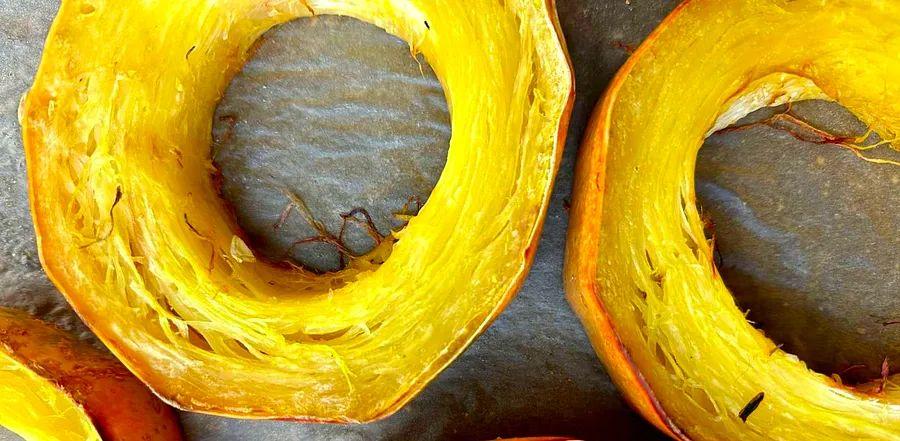This Trick Will Transform How You Prepare Spaghetti Squash

You were feeling adventurous at the grocery store and impulsively tossed a spaghetti squash into your cart. Maybe you were inspired to try something new for your health kick, or maybe you were just in the mood to experiment in the kitchen.
A week later, you're staring at a massive yellow squash on your counter, unsure of how to tackle it. You're wondering, 1. How do I cook this thing right? And 2. How on earth is this going to turn into pasta-like strands? Trust me, I've been there more times than I care to admit.
No matter where you're at in your spaghetti squash journey, I’m here to help you feel confident about preparing the perfect strands. I may not be Ina Garten, but I’m ready to share the secret to getting the longest, most tender spaghetti squash noodles—trust me, that’s the real win.
How to Achieve Perfectly Long Spaghetti Squash Strands
As you may have figured out by now, I think this vegetable doesn’t get nearly enough credit—if it’s cooked correctly, that is. It’s fun, packed with nutrients, and serves as an excellent low-carb alternative to pasta.
The trick to making your spaghetti squash resemble actual pasta is to achieve long, thin, and slightly crisp (or al dente) strands. You don’t want it undercooked, but it should be firm enough to hold its shape, so you can twirl it just like the spaghetti at your favorite Italian spot.
Since it wouldn't be a true pasta substitute without those long, noodle-like strands, I tested two different cooking methods to find out which produced the longest strands. I prepared two squashes—one sliced into thick rings and the other halved—and cooked them at the same temperature for about the same amount of time, then compared the results.
Which Cutting Method Yielded the Longest Strands?
After cooking two spaghetti squashes, one sliced into rings and the other halved, it was clear that the rings produced the longest strands. This is because the strands naturally grow in a circular pattern, not lengthwise from top to bottom (who knew?). So when you cut it in half lengthwise, you’re essentially cutting the strands in half, too.

By slicing the squash into thick rings, you keep those long, pasta-like strands in one piece. It does take a little extra time to slice and season each ring with olive oil, salt, and pepper, but this method is quicker to cook and gives you the most spaghetti-like appearance. Here’s how you do it:
How to Slice into Rings for Perfect Strands
- Preheat your oven to 425ºF and line a rimmed baking sheet with parchment paper.
- Cut off both ends of the squash, then slice it crosswise into thick 1-inch rings. Remove the seeds and arrange the rings on the baking sheet.
- Once they’re cool enough to touch, use a fork to scrape out the squash, pulling apart the strands as you go.

1

2

3

4

5
Evaluation :
5/5